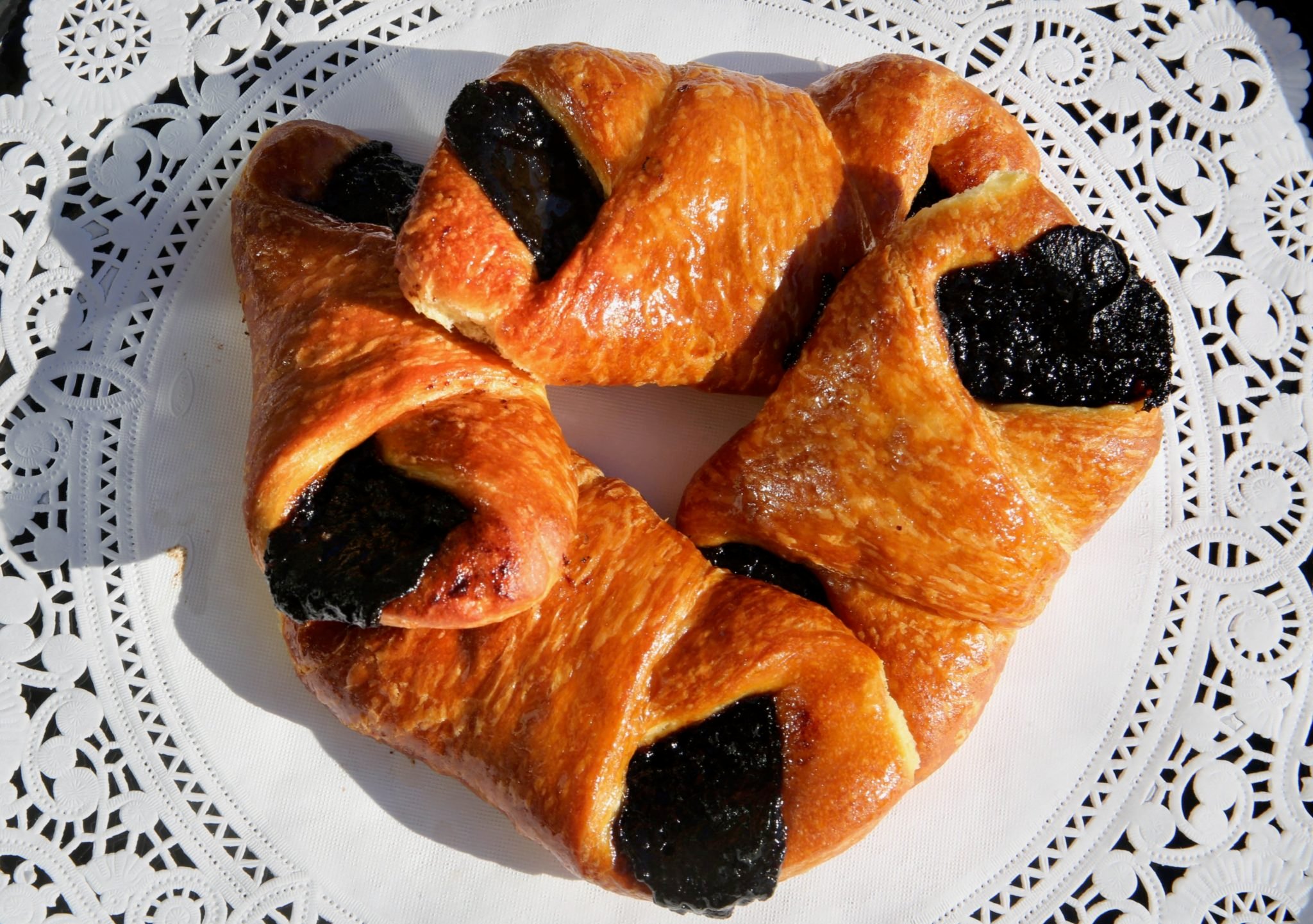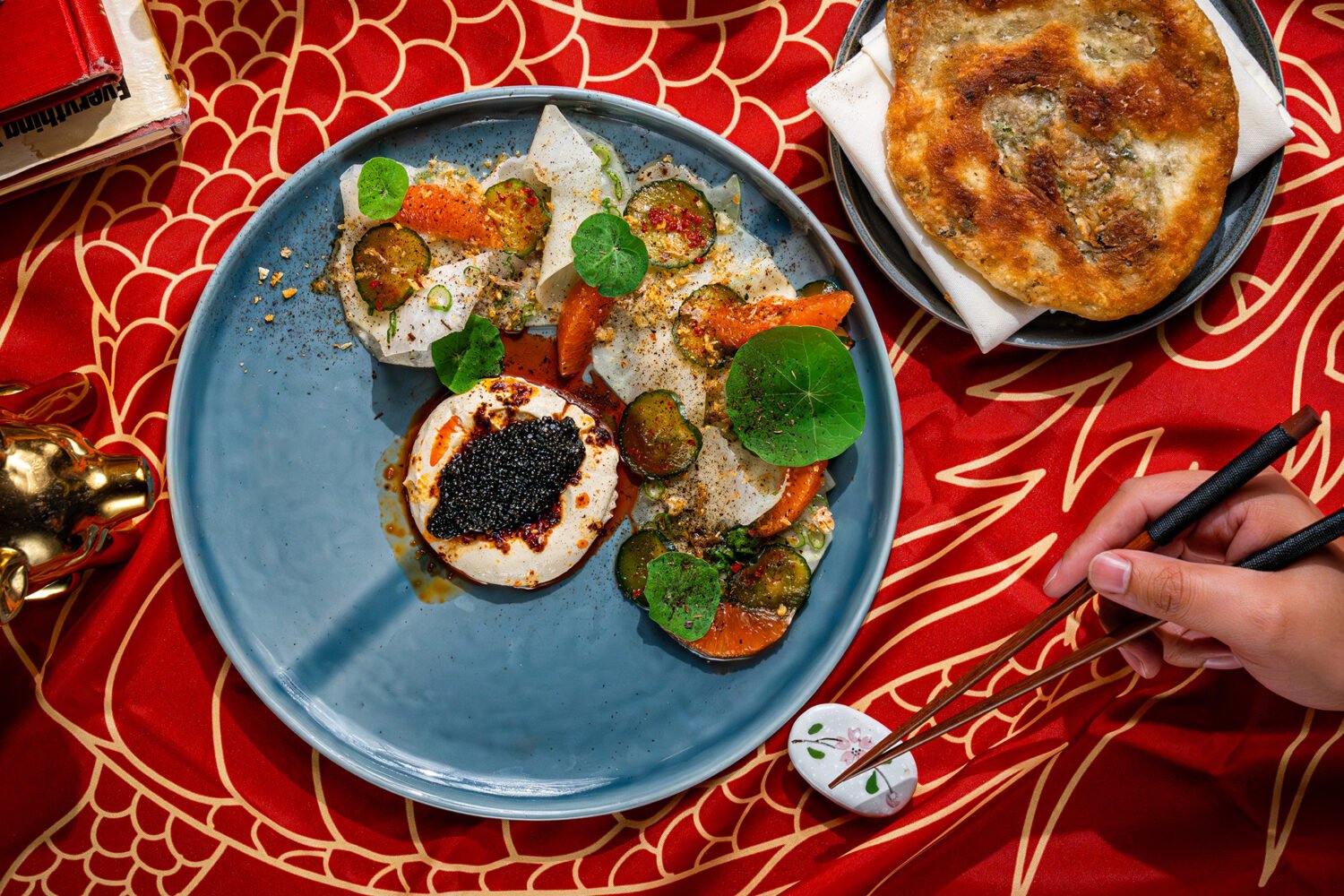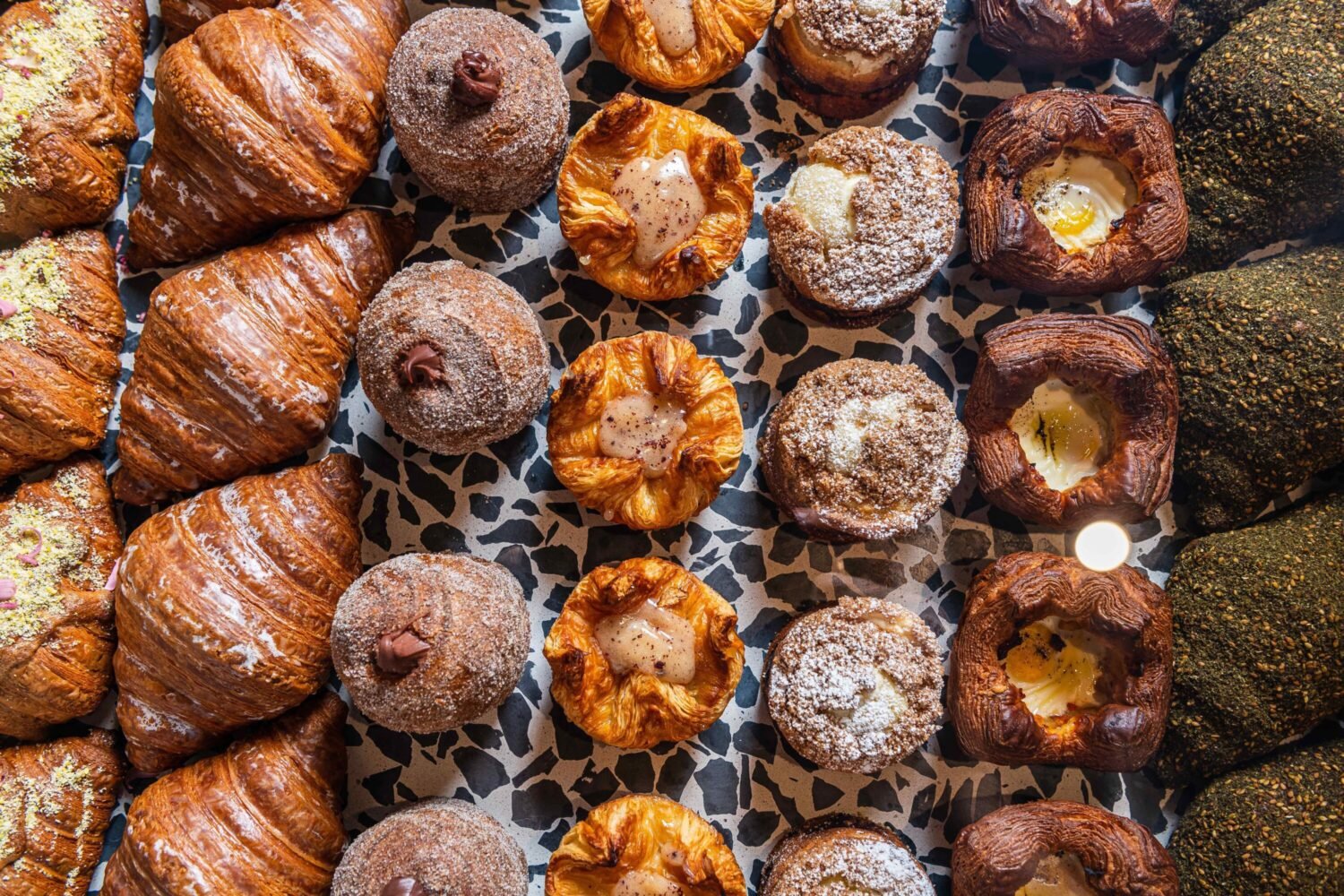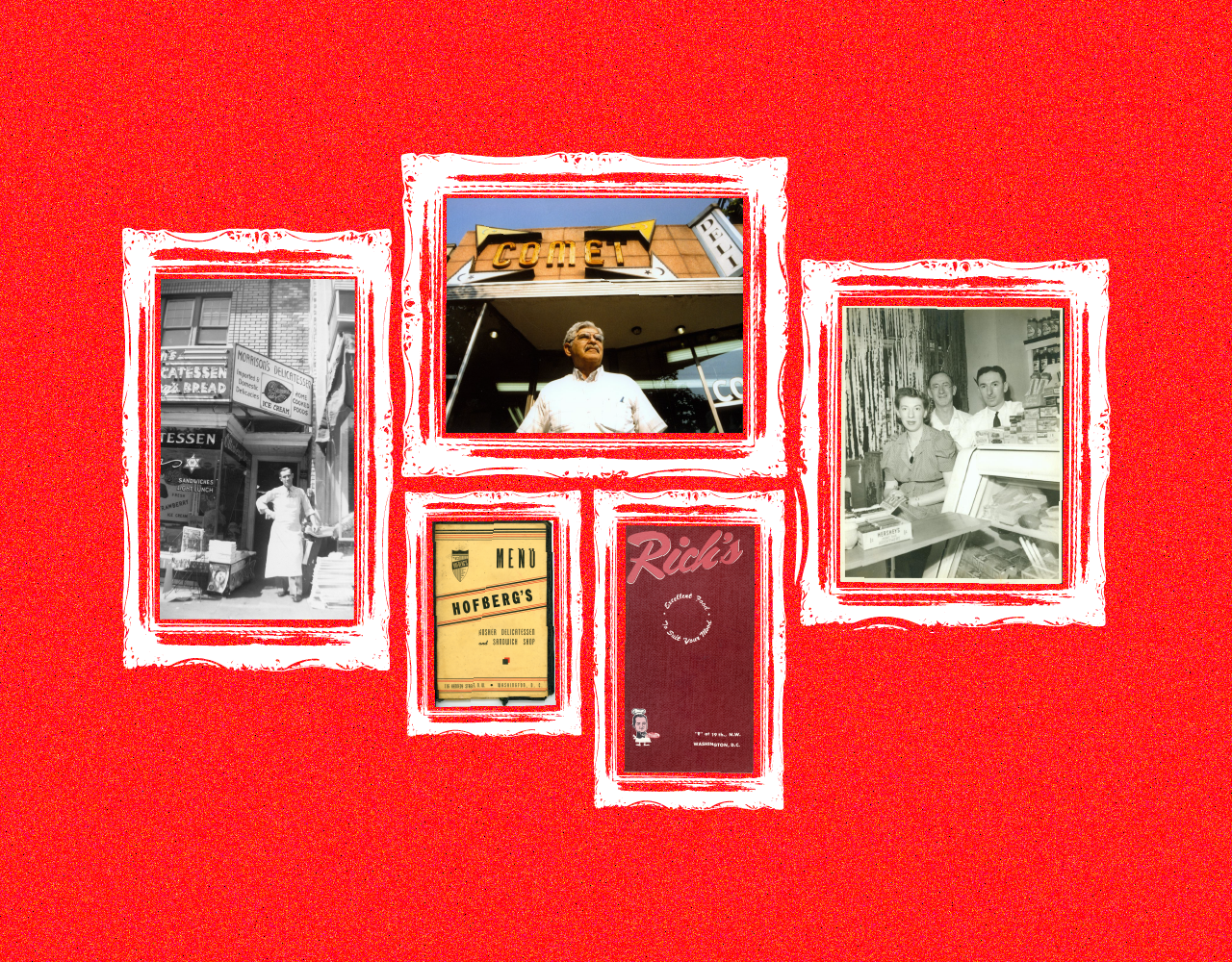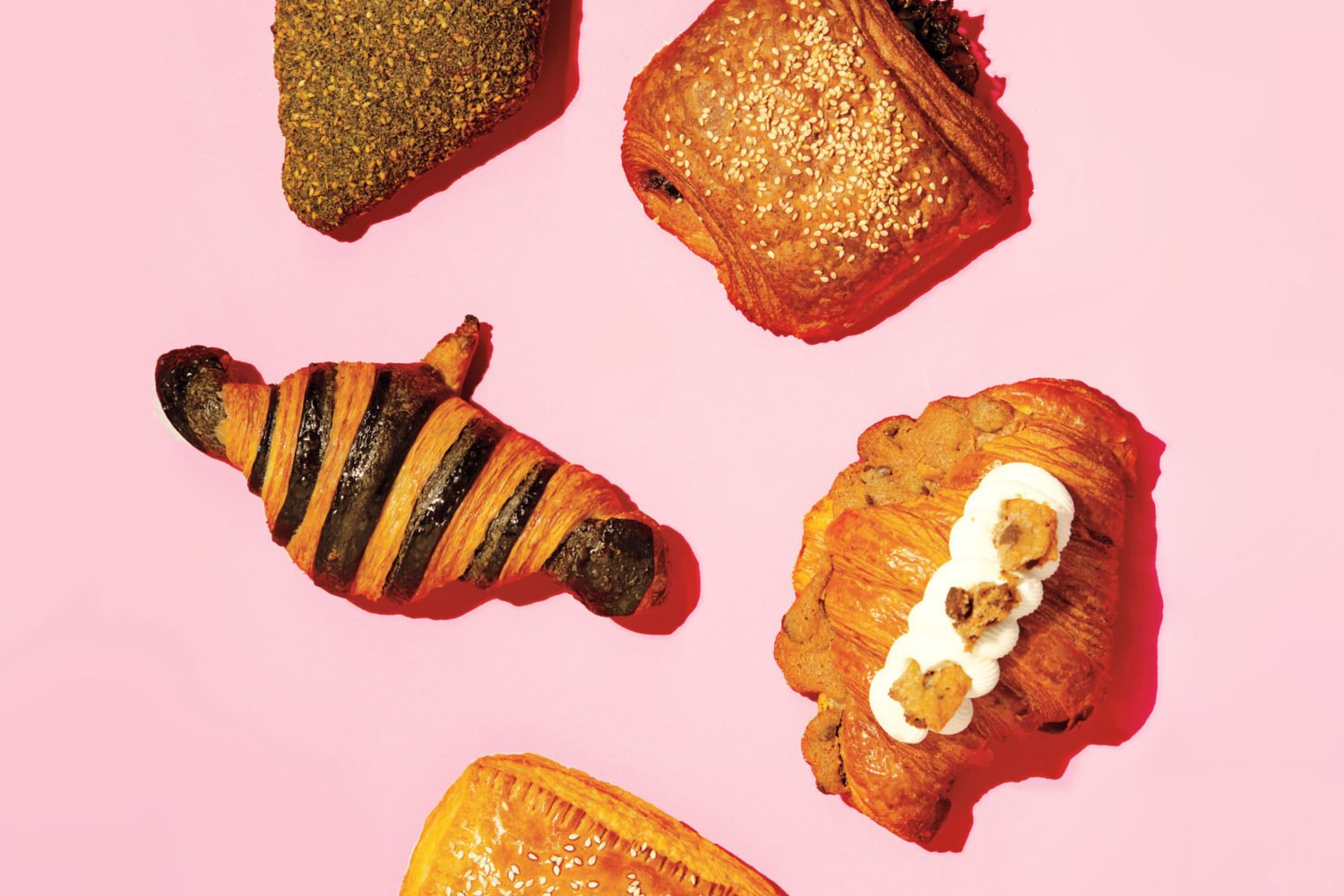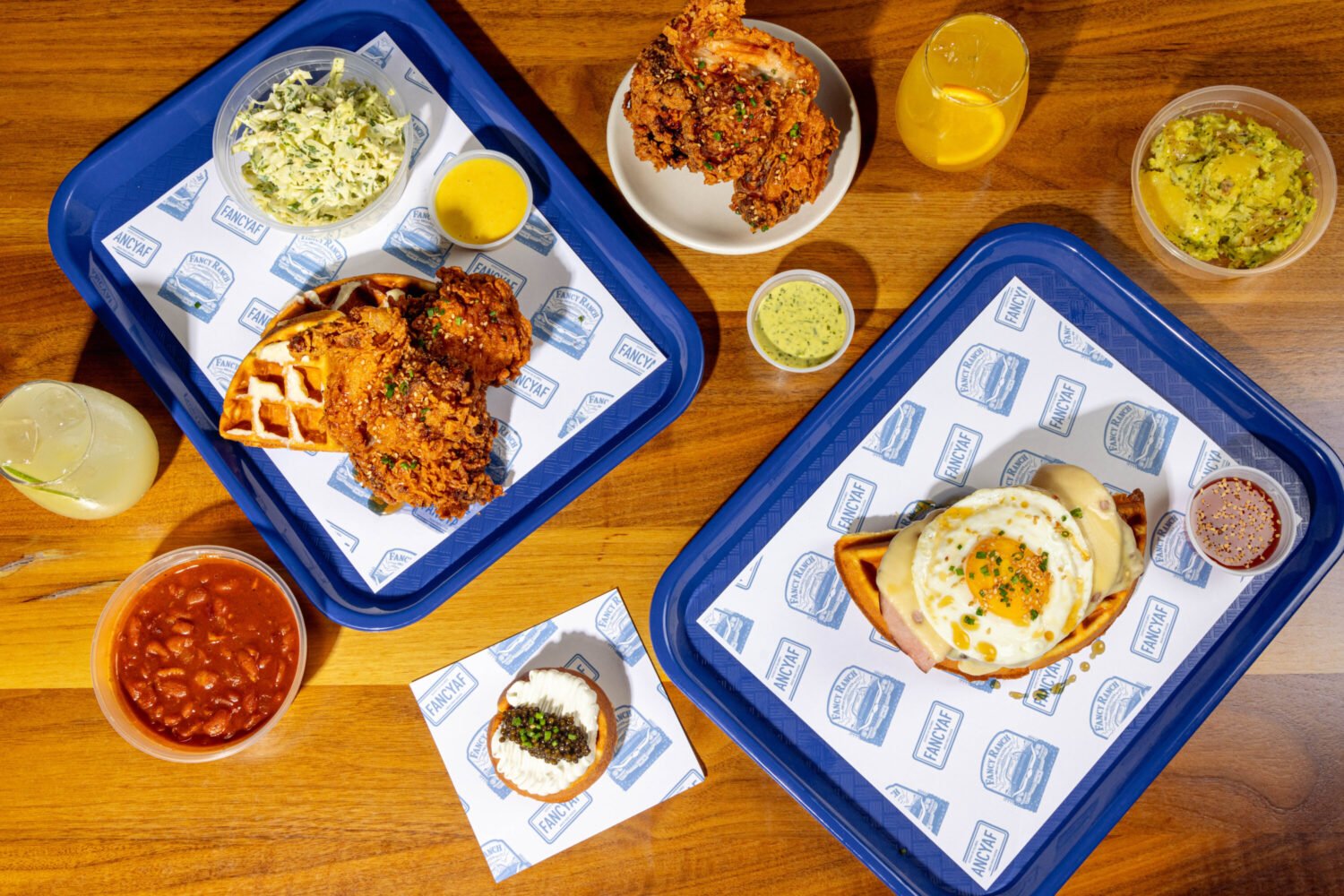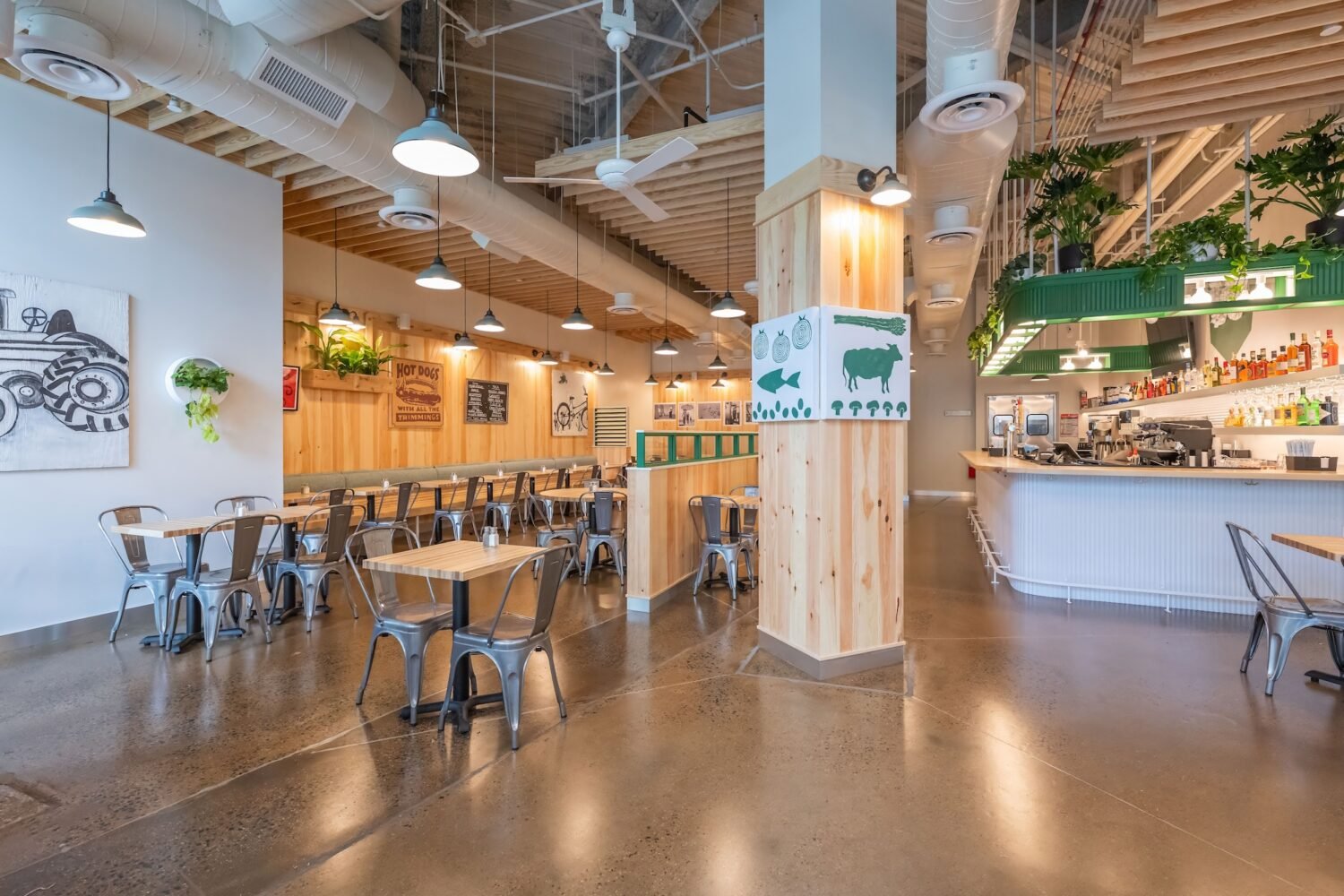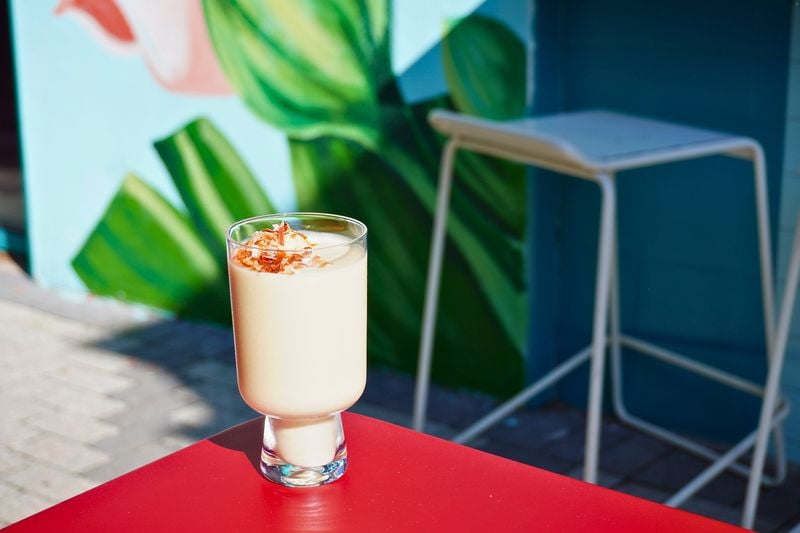Not long ago, I had a craving for a prune Danish. There was a time when dried-plum pastry was a special-occasion favorite, a mainstay of the bagel-and-lox spreads of my youth. Prune was my favorite Danish back then—every bit as good as the cheese variety and far superior to bright-hued fruit competitors like lemon and (yuck) blueberry. But I hadn’t tasted one in decades. Now, for no good reason, I felt an urgent need to procure one.
Well, I couldn’t find any. What had become of all the prune Danish? Once a familiar part of the area’s Jewish bakery and deli scene, the whole prune-Danish phenomenon seems to have dried up while I wasn’t paying attention. The places my family once bought them—Posin’s, say, or Sutton Place Gourmet—were long gone, but it was more than that. Prune Danish had fallen out of fashion.
When I mentioned my frustration with this in conversation, people tended to have the same reaction: Upon my utterance of the words “prune” and “Danish,” they laughed. It seemed this beloved food of my childhood had become a punchline. Naturally, this only made me more eager to locate one.
The problem, obviously, is the prunes. It’s hard to deny that there’s something geriatric and digestive about them—a dated delicacy that ranks on the culinary pleasure scale somewhere between cottage cheese and canned peach halves. Still, it was odd that such a Jewish-food staple seemed to have disappeared entirely. I started calling around. Everywhere I reached out to seemed to have shut down (Swiss Pastries in Rockville) or didn’t sell Danish (Kosher Pastry Oven in Silver Spring). I had no success at Shalom Kosher Grocery, Wagshal’s, the Parkway Deli, or any of the other places I could think of that seemed promising. Some kinds of Danish could be had. But when it came to the prune variety, it appeared I was plum out of luck.
Old-school Jewish American food in general is undergoing something of a renaissance, with local spots like Call Your Mother and Chewish Deli updating the classics for a less elderly crowd. These places pay tribute to the immigrant culture that helped make Danish a thing in this country—exactly where one might expect to score a prune pastry to go along with the hand-rolled bagels. Well, sorry: There is no prune Danish at Call Your Mother or Chewish Deli. “I’m not sure it would be popular enough to make,” said Chewish Deli owner Gregg Linzey when I called to inquire. “Especially younger demographics. I don’t think prune is a flavor they would even try, to be honest with you. Of the many, many things that people have come and said, ‘Do you know where I can get this?’ or ‘Hey, you should make this,’ prune has never been brought up.”
Determined to get to the bottom of this purple-hued puzzle, I phoned Joan Nathan, DC’s resident expert on Jewish food, whose 1994 book, Jewish Cooking in America, is a classic. It turned out Nathan wasn’t that eager to wax rhapsodic about prune pastry. She did immediately respond with a name, though: Freddie Loeb. “He was one of the bakers everybody knew in Washington,” she said, and he apparently made a killer prune Danish at his store, DeLuxe Bake Shop.
Loeb and his wife, Anne, were Holocaust refugees who moved to the area in the early 1950s. They opened DeLuxe in Takoma Park, then relocated to White Oak, where it was a local kosher institution. The place closed in 1987; the Loebs were retiring and couldn’t find anyone to take over the business. For years, Freddie continued to sell his famous challah from his house around the High Holidays. Customers’ cars would line up for blocks.
Loeb died in 2011, but his daughter, Susan Broder, still lives in the area. Like Nathan, she seemed perplexed by my call. When I told her I wanted to chat about this particular faded treat, there was a pause. “Okay … ,” she said. “What about prune Danish do you want to talk about?”
It turned out Broder was a fan—“I think anything with prunes is delicious”—but she also hadn’t encountered them for years. “The kind of Danish that we used to have? Nah, you can’t get those anymore,” she said. “I haven’t seen it anywhere. Now you’re making me wonder if I have my father’s recipe for prune Danish … ”
Broder pulled out Freddie Loeb’s roughly 75-year-old box of recipes, which she still keeps close at hand, then texted me a photo of the file card with his specs for Danish. Suddenly, a crazy thought occurred to me: Could I make my own prune Danish? I am no baker—Duncan Hines is about as advanced as I’ve ever gotten—but here was a recipe straight from a revered master. I asked Broder for her blessing. “Whatever makes you happy,” she said with a laugh.
I enlisted my sister, who has a history of tackling quixotic culinary projects. Unfortunately, Loeb’s recipe didn’t prove to be super useful, as it simply listed vague ingredients in ginormous quantities (a pound of sugar, a pound of fat, “color and flavor”). But we augmented it with another recipe we found online, and after tracking down a rolling pin and acquiring a disturbing amount of butter, we were underway. The process was unexpectedly complex. It took several hours over the course of two days and involved far more rolling and folding than you’re probably imagining. The result was an admirable failure—slightly wrong in various ways that I’m not qualified to determine. It wasn’t inedible. But it certainly wasn’t what I wanted.
For many of us who grew up in the area, Bruce Variety in Bethesda was an essential childhood destination. My mother would drag us there for all sorts of random supplies, and those trips often ended with a stop at Breads Unlimited in the same shopping strip, where we’d get an elephant-ear cookie as a reward for good behavior. Bruce Variety closed years ago, and I hadn’t been to Breads Unlimited since, probably, Marion Barry was mayor. But one afternoon I happened to be passing by and decided to pop in, just to make sure they didn’t offer my pastry Holy Grail. “Do you have prune Danish?” I asked, already turning to leave in defeat. But the counterperson gave an unexpected reply: “How many?”
Breads Unlimited had prune Danish! I bought one and took it home. The pastry was, after all that, nothing extraordinary—just a puff of light-brown dough folded over that enticingly inky filling. It seemed like it had been beamed in from some earlier era: non-gourmet and unflashy and wonderfully familiar. I took a bite, then another and another. Soon—too soon—it was gone.
I reached out to Breads Unlimited owner Jose Molina, an affable guy who seemed to share both my love of prune Danish and my confusion about its plummeting popularity. “It’s funny, because prune Danish is a good taste, so we should be selling a lot,” he told me. “But people have this bad impression when you talk about prune: ‘Oh, it’s a laxative,’ you know what I mean? I guess it’s old-fashioned.”
As it happens, Breads Unlimited’s supply is far from unlimited: around six prune Danish a day, generally all purchased by the same handful of older men who drop by for their daily fix. “We keep it in stock because we sell them,” said Molina. “We don’t want these customers to be disappointed.” I imagine these prune consumers resembling my long-gone Viennese grandfather, who, even after moving to the US in 1940, insisted on a 4 PM snack—he used the Austrian expression jause—that usually involved a Danish. (Whether he enjoyed the prune variety is lost to time, although I’m told he did frequently complain of digestive issues.) Molina says they do a lot of business with other Danish flavors, and also prune hamantaschen. But the particular combination of prune filling and Danish pastry? “It’s not a big seller.”
It turned out that the pastry I snarfed down in my kitchen had some seriously deep roots. Breads Unlimited has been selling Danish (along with lots of other stuff) from the Bradley Shopping Center since 1981, but its origins trace to a shop called the New Yorker Bakery that a Jewish immigrant from Poland opened in Northwest DC in the 1930s. One of his employees, George Raab—who escaped from Austria around the same time my Danish-loving grandfather did—bought the place in 1950, and Steven, his son, later took over. (The bakery moved to Takoma DC and then Takoma Park.) It was Steven who’d decided to expand the business with Breads Unlimited. Forty years later, in 2021, he retired and sold it to Molina—himself an immigrant from El Salvador.
View this post on Instagram
Molina had started working at the bakery when he was 21 and ended up staying for the next 19 years. In 2008, he left to become an electrician, but his family missed the delicious baked goods he’d regularly supplied. So just for fun, he built a small professional kitchen in the basement of his Kensington home and started tinkering. “Baking is not just putting ingredients together,” he told me. “Baking is a science.” One of the things Molina experimented on was Danish. “I always think that if you give a little unique touch to things, that’s when it becomes great. So I started to try different things. Sometimes it was thrown away because it was not good. I was practicing, practicing, practicing until I got it right. Then my family said, yeah, this is the flavor! This is the stuff.”
Let me tell you, it is some recipe. Molina’s Danish takes four days to make, and the dough alone contains about 15 ingredients. When we talked, I challenged him to name them all. “Oh, it’s a combination of eggs, sugar, salt, mace,” he said. “Nutmeg. Cinnamon. Milk, butter, margarine. A little bit of vegetable shortening. What am I missing here? A little color in there. Lemon flavor. Vanilla flavor. And then we got two types of flours. It’s a lot of ingredients.” The dough comes together on day one, then gets stashed in the fridge to start fermenting. The next day, margarine and butter get folded in (about ten folds in the sheeter) and it goes back into the refrigerator overnight. Day three is for cutting, more sheeting, and shaping. The filling gets added, and it’s returned to the cooler. The baking crew arrives the next day at around 2 AM and starts putting stuff in the oven. If you show up when they open at 7, your long-gestating pastry will probably have come out of the oven less than an hour ago.
“And the thing is, it tastes really good,” Molina said. “It’s a good Danish, you know what I mean?”
Recently, I acquired a couple of Molina’s finest and trekked out to a Starbucks in Rockville, where I met up with Randy Posin. Posin’s last name will be instantly familiar to longtime DC-area Jewish-food fans; his family’s bakery and delicatessen, Posin’s, was a local institution. When I was young, the emporium on Georgia Avenue, Northwest, was where my family went to pick up bagels and lox and pastries (and free cookies for kids). It’s possible that Randy himself rang up my first-ever prune Danish.
Randy told me he hadn’t tasted a prune pastry since Posin’s shut down in 1998. “I’m not a big sweets eater,” he said as I unwrapped the samples I’d brought for us to try. “As far as prune Danish goes … um, well, I’ll wait to see what this is like.”
The history of Posin’s stretches all the way back to 1918, when a Russian immigrant named Abraham Posin opened a kosher market in Foggy Bottom. It then moved to various spots around town, most notably Center Market, the huge hall where the National Archives now stands. In 1947, Abraham set up shop in the Georgia Avenue location most people now remember, at which point he added a bakery that became known for its bagels and pastries. When he died a decade later, his sons Max and Hyman took over.
Randy Posin—Max’s son and Abraham’s grandson—started bagging oranges at the family store when he was ten, later taking on shifts behind the counter. “Instead of playing football in high school, I worked in the delicatessen,” he said. “It was a family thing, it was a tradition. I enjoyed working with my dad.” By his early twenties, Posin was there full-time. Though he mostly focused on management tasks and the deli operation, Posin has always loved to bake, and he still makes bagels and breads at home. It was DeLuxe Bake Shop’s Freddie Loeb who taught him how to make challah.
Today, Posin works at a high school in Montgomery County, teaching culinary skills. As part of his classes, students learn to bake cakes, cookies, and pies. “Maybe I’ll do Danish this year,” he said, eyeing the twin treats on the table in front of us. I asked how he imagined that prune Danish might go over with the kids. He laughed. “No, it won’t be prune,” he said. “I’d be the butt of too many jokes: ‘Mr. Posin wants to make me regular again.’ ”
Posin picked up half a pastry, gave it a practiced once-over, and took a nibble. “Okay, so our recipe was totally different than this except for the filling,” he said. “It was a harder, firmer Danish. To me, this is kind of plain.” And that was pretty much all he had to say about the prune Danish.
We chatted a while longer about the history of Posin’s and Jewish foods of the past, what his family’s business meant to the community and why he walked away. Finally, it was time to go. I asked for any last thoughts on the general subject of prune pastry. “I appreciate you bringing it out,” he said, diplomatically. “I mean, it’s good. I don’t know if I’m as excited about it as you are … ” Well, fair enough. I said goodbye to Posin and brought the untouched remaining Danish home, where I had it with my coffee the next morning. It was perfect.
This article appears in the October 2022 issue of Washingtonian.

